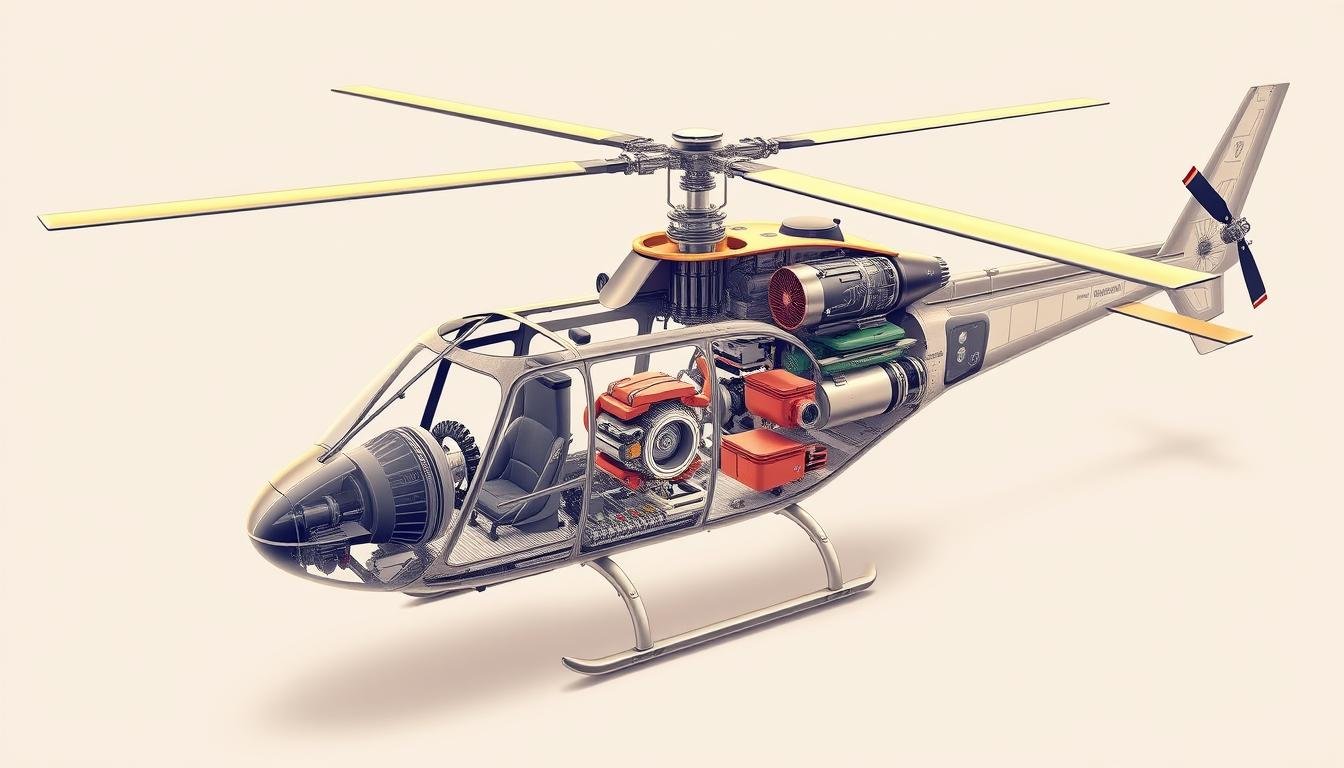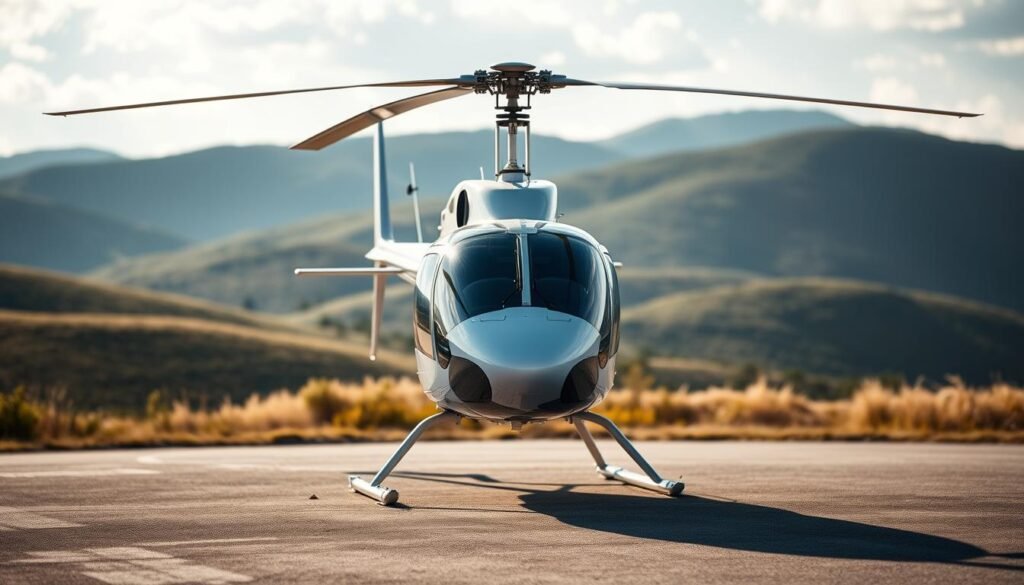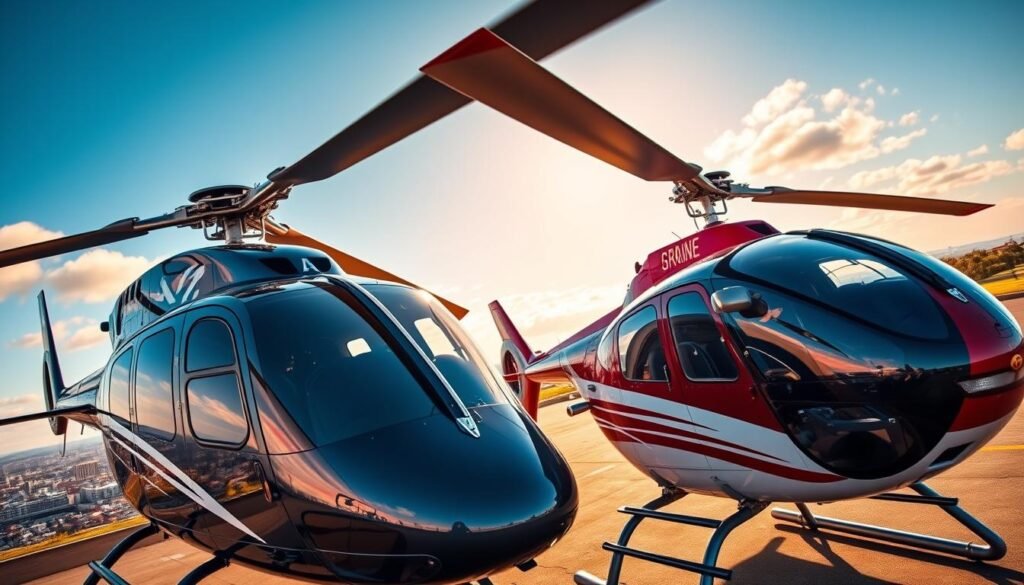Surprising fact: a training operator reported monthly bills that added up to more than $11,000, which can equal roughly $560 per flight hour before unplanned work.
The guide begins by showing that ownership blends monthly bills and per-hour charges. Every buyer must estimate annual flight hours to turn mixed line items into a realistic hourly figure.
Key categories include purchase-related expenses, liability and hull insurance, hangar or tie-down fees, fuel and oil, landing and parking, maintenance, upgrades, and pilot pay. Owners should annualize monthly sums, add per-hour items multiplied by planned hours, then divide by total hours.
This section sets clear expectations: aircraft keepers see wide variation by type, mission, and location. Understanding the interplay of fixed and variable cost elements prevents surprises and supports smarter budgeting decisions.

Key Takeaways
- Estimate annual flight hours first; it anchors the whole model.
- Combine monthly and per-flight expenses to compute an hourly cost.
- Fuel and oil are sizable per-hour items; regional fuel price matters.
- Maintenance, inspections, and unscheduled repairs drive variability.
- Insurance and hangar commitments are often billed annually and affect the hourly rate.
Understanding Helicopter Operating Costs In The United States
Buyers should first compile all monthly obligations and the expenses that grow with each flight. This step creates a realistic annual picture and helps turn mixed line items into a usable hourly figure.
Buyer’s Guide Intent: What Prospective Owners Need To Know
Prospective owners must include purchase price, hull and liability insurance, hangar or tie‑down, per‑flight fuel and oil, landing and parking fees, maintenance, upgrades, and pilot pay. Use U.S. resources like GlobalAir fuel postings to set a local fuel price and translate engine burn into a per hour figure.
Fixed Versus Variable Helicopter Operating Costs: How They Shape Your Budget
Fixed items such as insurance and hangar are billed monthly or annually and affect the budget even if few flights occur. Variable spending—fuel, oil, and many maintenance items—scales with flight hours and mission tempo.
Typical Use Cases: Personal, Training, And Charter Considerations
Personal use, intensive training, and on‑demand charter drive different utilization and oversight. Higher flight tempo lowers the per hour burden of fixed fees but raises variable spend and service needs.
Practical tip: assess pilot experience, expected number of hours per year, and tolerance for variability. For a quick rental benchmark, see a related guide to rent a helicopter.
Helicopter Operating Costs: Fixed, Variable, And Per Hour
Owners must separate fixed monthly commitments from per‑flight expenses to see the true hourly picture.
Fixed Costs: Insurance, Hangar Or Tie-Down, Financing, And Lease
Fixed items include annual insurance for liability and hull, hangar or tie‑down fees, and lease or financing payments. These obligations accrue whether the aircraft flies or not.
Insurance Realities: Liability And Hull Factors That Influence Price
Insurance pricing depends on aircraft value, planned annual hours, mission, location, and pilot experience. Owners should get multiple quotes because the same airframe can yield very different rates.
Fuel And Oil: JetA/100LL Pricing, Burn Rates, And Oil Consumption

Fuel estimates use local JetA or 100LL price and the engine burn rate. For example, a Bell 206 at 26–30 GPH with a $6.97/gal price yields about $181.22–$209.10 per hour.
Oil can be estimated at one quart per five hours (~$6 per quart), about $1.20 per hour when allocated by time.
Maintenance And Inspections: Annuals, 100-Hour Checks, And Unscheduled Repairs
Plan for annual inspections, 100‑hour checks, and unscheduled repairs. Variability is common; maintenance budgets should include a reserve for unexpected work.
Landing, Parking, And Airport Fees: Planning For Monthly And Trip Expenses
Estimate landing and parking fees both monthly and per trip and add them into the hourly model. These small charges can add up on frequent training flights.
Pilot Helicopter Operating Costs: Staff, Safety Pilot Requirements, And Training Time
Pilot pay depends on qualifications, training time, and whether a staff or safety pilot is required by insurance. Pilot expense can change per hour economics for training or charter use.
Source Snapshot: H.O.G.S. Example Of Monthly Expenses And ~$560.80 Per Hour
| Category | Monthly | Annualized | Per Hour (20 hrs) |
|---|---|---|---|
| Lease | $5,200 | $62,400 | $260.00 |
| Insurance | $2,250 | $26,000 | $112.50 |
| Fuel (20 hrs) | $1,200 | $14,400 | $60.00 |
| Inspections & Maintenance | $366 + $184 | $6,800 | $177.00 |
| Other Fees & Pilot | $200 | $2,400 | $10.30 |
| Total (H.O.G.S.) | $11,216 | $134,592 | $560.80 |
How To Calculate Your Hourly Helicopter Operating Costs And Annual Budget
Start by converting every recurring bill into an annual figure so the math stays consistent.
Step-By-Step Method: Convert Monthly And Hourly Inputs Into An Annual Total
Step 1: Multiply monthly items—hangar, insurance, lease—by 12 and set this subtotal aside.
Step 2: Sum per‑hour elements—fuel, oil, inspections, hourly maintenance accruals—and multiply by planned annual hours.
Step 3: Add the two annual subtotals to get a budget, then divide by planned hours to get a per hour rate.
Fuel Math Example: Local JetA Price × Burn Rate For A Per Hour Estimate
Use a published burn rate and a local JetA price. For example, 26–30 GPH at $6.97/gal yields roughly $181–$209 per hour for fuel alone.

Real-World Benchmark: Bell 429 Annual Costs And $3,771 Per Hour At 300 Hours
The Bell 429 example at 300 hours shows variable costs of $407,031 and fixed costs of $724,198. The annual budget totals $1,131,229, or about $3,771 per hour.
“Annualize fixed fees, model fuel by burn rate, and include inspections to avoid surprises.”
| Item | Variable | Fixed |
|---|---|---|
| Bell 429 | $407,031 | $724,198 |
| Total Annual | $1,131,229 | |
| Per Hour (300 hrs) | $3,771 |
For a deeper walk‑through of ownership math, see a full guide on how to calculate the full cost of. If training or pilot hires affect the model, compare programs and pay with a pilot training cost resource.
Final Thoughts about Helicopter Operating Costs
The practical test for any ownership plan is whether monthly and per‑flight numbers produce a defensible hourly rate when annualized and divided by planned hours.
Examples from a high‑tempo training operator and the Bell 429 benchmark show how utilization and configuration shape the per-hour result. Owners must validate insurance, hangar, fuel, oil, maintenance, inspections, landing fees, and pilot staffing with local pricing before committing. Scenario-testing different annual hour projections is essential, as utilization meaningfully shifts the per-hour outcome. Safety and insurance should be treated as nonnegotiable pillars of responsible ownership.For deeper insight, explore the Transportation Research Board’s cost measurement summary, which outlines technical classifications and budgeting frameworks. Prospective pilots can also compare certification paths and tuition ranges using this dedicated helicopter training program guide.
FAQ
What major expense categories should an owner expect when budgeting for helicopter use?
Owners should plan for fixed charges like insurance, hangar or tie-down fees, and financing or lease payments, plus variable items such as fuel and oil, routine maintenance and inspections, unscheduled repairs, landing and parking fees, and pilot salaries or training costs.
How do fixed versus variable charges affect annual budgeting?
Fixed charges remain consistent month to month and help set a baseline budget, while variable charges change with flight hours and mission profile. Combining both gives a realistic annual figure by multiplying expected hours by per-hour variable rates and adding yearly fixed expenses.
How is per-hour expense typically calculated?
Calculate per-hour expense by totaling fuel burn cost, oil consumption, maintenance reserves (including scheduled inspections), engine time between overhauls, landing and airport fees, and pilot hourly pay, then divide irregular annual items into an hourly rate based on projected flight hours.
What fuel factors most influence the per-hour number?
Local Jet A or 100LL price, the rotorcraft’s burn rate, and taxi/idle time drive fuel cost. Using up-to-date fuel pricing and realistic burn figures for the model in question yields a reliable per-hour fuel component.
How much does insurance add to yearly expenses?
Liability and hull premiums vary with aircraft value, pilot experience, operating area, and mission type. Insurance can range from a few thousand to tens of thousands annually; higher hull limits and lower pilot minimums increase the premium.
What maintenance items should be reserved for in the budget?
Budget for scheduled annual inspections, 100-hour checks where applicable, component life-limited parts, engine and gearbox overhauls, and an unpredictable reserve for unscheduled defects or damage discovered during checks.
How do pilot costs impact overall expense for charter or training operations?
Pilot salaries, benefits, recurrent training, and safety pilot requirements significantly affect hourly operating figures. Commercial operations typically amortize these costs across flights, while private owners may count instructor time or contracted pilot fees per sortie.
Are hangar and airport fees a large portion of the budget?
Hangar or tiedown fees are predictable fixed costs but can be substantial in busy metro areas. Transient landing and parking fees add trip-specific expenses that should be included when planning itineraries or charter rates.
How often should owners update their per-hour estimates?
Owners should update estimates at least quarterly or whenever fuel prices, insurance renewals, maintenance events, or flight hours change materially. Regular updates keep budgets accurate and prevent surprises.
Can an owner reduce hourly expense without cutting safety?
Yes. Strategies include consolidating maintenance with reputable MROs for volume discounts, optimizing flight planning to reduce idle time, selecting appropriate hangar solutions, and investing in pilot training to lower insurance premiums and operational risk.
What role does utilization play in the annual cost picture?
Higher utilization spreads fixed costs over more hours, lowering the per-hour fixed allocation but increasing variable expenses like fuel and wear. Low-use aircraft show higher per-hour fixed burdens and may require different ownership strategies.
Are there industry benchmarks owners can use for comparison?
Manufacturers, fractional providers, and industry groups publish model-specific benchmarks. Operators should compare similar mission profiles and annual hours; sample snapshots, such as owner group analyses, can illustrate monthly totals and per-hour ranges for common types.
How should owners plan for major engine or gearbox overhauls?
Create a reserve fund tied to the time-between-overhaul schedule and expected replacement costs. Spreading overhaul costs across annual budgets or per-hour rates smooths cash flow when the maintenance event occurs.
What examples help illustrate real-world costing methods?
Use a fuel math example (local Jet A price × documented burn rate per hour), add scheduled maintenance reserves, divide annual fixed fees by projected hours, and include pilot and airport fees to build an hourly estimate tied to a realistic annual total.
How should prospective buyers use these cost estimates when choosing a model?
Buyers should match mission requirements—passenger count, range, and typical flight length—with the model’s fuel burn, maintenance profile, and insurance implications. Comparing total cost of ownership across likely annual hours helps pick the most economical option.ng and preparing for these costs ensures that you can manage your helicopter efficiently and avoid unexpected financial strain. Whether you’re flying for personal enjoyment or business purposes, carefully considering these factors will help you make informed decisions and maximize the value of your helicopter investment.
Related Articles
- Top Helicopter Brands: A Complete Buyer’s Guide to the Industry Leaders
- Single vs. Twin-Engine Helicopters: What’s Right for Your Needs?
- Best Helicopters for Search and Rescue: A Comprehensive Buyer’s Guide
- Helicopter Operating Costs: A Complete Guide to Understanding the Expenses
- Top Training Helicopters: The Best Models for Learning to Fly
- Most Fuel-Efficient Helicopters on the Market: Top Picks
- Best Helicopters for Filmmaking and Aerial Photography: A Buyer’s Guide
More from This Category
- Best Helicopters for Medical and Emergency Services: A Buyer’s Guide
- Used vs. New Helicopters: Which is the Better Investment?
- Beginner’s Guide: What to Look for When Buying Your First Helicopter
- Top Military Helicopters for Sale: A Comprehensive Buyer’s Guide
- Helicopter Leasing vs. Buying: What’s the Best Option for Your Business?
- Best Helicopters for Business and Corporate Use: Efficiency, Range, and Comfort
- Luxury Helicopters: A Buyer’s Guide to the Most High-End Models on the Market
- Top 10 Civilian Helicopters: Comparing the Best Models for Private Use



